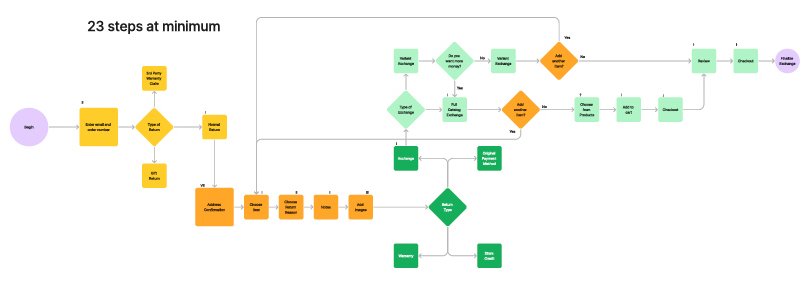SaaS Workflows
PROJECT OVERVIEW
Due to NDAs, I am not allowed to discuss the particular client, product or industry that this case study focuses on.
All proprietary information has been removed and key elements have been changed, blurred or removed to avoid sharing key information.
Please keep this in mind that the overall approach, methodology and procedure works and proved to be incredibly successful.
The Goal
A company needed to improve their overall experience structure to maximize effectiveness and timeliness to complete a specific task. In order to be successful, they needed identify their current workflow and necessary steps involved in the completion of that task.
The ask was nebulous as there was no overarching plan, map or layout. What we did have was confusing, often conflicting and had many unclear terms / actions.
Approach & Research
To understand the task, the product needed to be fully understand as well as every action. This being said, the process of mapping out the existing workflow began. It needed to not only categorize all of the specific paths to insure there was no cross over or duplication, but it also had to take into consideration all of the potential ‘what-ifs’ that could arise if the user decided to change their mind half way through one task and try to accomplish another. This step by step breakdown also allowed the opportunity to identify pain points, divergent or conflicting content. The resulting workflow map was large, hard to understand and unwieldily, just like the experience of the product was for the users.
Strategy
After the existing workflow map was created, a KLM study was done on the specific branch in question as all the necessary paths were mapped out. This was in tandem with an isolated workflow map, highlight said path for ease of viewing. The resulting figures surprised everyone as it was more than quadruple the amount of steps and time that was generally accepted within the company to complete that task. While there were a minimum of 23 ‘steps’ to complete the task, the KLM audit showed that it was a combination of 206 actions with a minimum completion time of 7 minutes and 46 seconds.
Comparison
After the internal audit on this particular branch was complete, it was time to see what the competition was doing and how they fared with a similar task. Not surprisingly, all 5 competitors had a significantly shorter and streamlined workflow. While this was not welcome news, it did inspire areas for future focus.
End Result
After spending time with Product and Engineering and listening to their advice and feedback, a new workflow for the experience was created, cutting the amount of steps by 57% and overall time on task by 46%, resulting in less abandonment and higher completion rate.
These findings were then applied to the overall structure of the entire product, resulting in a slimmer and more efficient overall experience, less code, and quicker deployment times.






